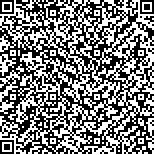李芸香,修海华,高巧平,等.负压封闭引流技术联合高压氧对糖尿病足患者创面组织中转化生长因子-β1的影响[J].中华物理医学与康复杂志,2022,44(8):722-726
扫码阅读全文

|
| 负压封闭引流技术联合高压氧对糖尿病足患者创面组织中转化生长因子-β1的影响 |
|
| |
| DOI:10.3760/cma.j.issn.0254-1424.2022.08.012 |
| 中文关键词: 负压封闭引流 糖尿病足 高压氧治疗 |
| 英文关键词: Vacuum sealing Drainage Diabetes Foot ulcers Hyperbaric oxygen |
| 基金项目: |
|
| 摘要点击次数: 4052 |
| 全文下载次数: 3978 |
| 中文摘要: |
| 目的 观察负压封闭引流技术(VSD)联合高压氧对糖尿病足患者创面组织中转化生长因子-β1的影响,并评估其对糖尿病足溃疡的近期临床疗效。 方法 将符合入组条件的糖尿病足溃疡患者156例随机分为对照组(78例)和治疗组(78例),2组患者入院后均进行生活指导及积极的降糖降脂治疗,并根据创面培养情况进行抗感染治疗;所有患者入院后创面尽早清创,干净后将负压封闭引流套装(美国Kineti Concepts公司)中的泡沫材料裁剪后覆盖创面,用半透明膜密封,予以负压(-75~-100 mmHg)吸引,观察材料若出现持续瘪陷则视为引流有效,连续引流1周,共2个疗程。治疗组在此基础上加用高压氧治疗,方案参照Kessler等的方法升压15 min,暴露压力为0.25 MPa,吸100%氧30 min×2次,中间间隔10 min吸舱内空气,匀速减压25 min,每日1次,共治疗2周。分别于治疗前、治疗1周时及治疗2周后,观察2组患者的创面情况、血液流变学、创面肉芽组织染色及转化生长因子-β1变化情况。 结果 2组患者的创面面积及症状评分均较组内治疗前有明显改善(P<0.05),其中治疗组在治疗1周时改善最为明显,且较对照组差异有统计学意义(P<0.05);2组患者的血液流变学在治疗1周时有所改善,其中治疗组改善更为明显(P<0.05),但在治疗2周后,2组患者均较组内治疗前无明显变化(P>0.05)。创面组织HE染色发现,2组患者治疗前主要以炎性细胞为主,新鲜肉芽组织、新生血管较少;治疗1周时,2组患者均可出现大量新生肉芽组织,且数量相差不大;治疗2周后,对照组仍可见较多的新生肉芽组织,但治疗组却略有减少。2组患者创面组织中的TGF-β1蛋白含量均较组内治疗前有显著升高(P<0.05),但在治疗2周后,治疗组的TGF-β1蛋白含量却明显回落,且与对照组比较,差异有统计学意义(P<0.05)。 结论 糖尿病足患者持续1周的高压氧治疗可有效改善患者血液流变学,促进肉芽组织及成纤维细胞增生,提高创面组织中TGF-β1蛋白含量,但随着高压氧治疗时间的延长,这种作用逐渐减弱。 |
| 英文摘要: |
| Objective To observe the effect of supplementing vacuum sealing drainage with hyperbaric oxygen in the short term treatment of diabetic foot ulcers. Methods A total of 156 persons diagnosed with diabetic foot ulcers were randomly divided into a control group and a treatment group, each of 78. Both groups received life guidance and active treatment to lower blood sugar and lipids, as well as anti-infection treatment guided by bacterial cultures. Both groups′ wounds were debrided. The wound was then covered with foam, sealed, and negative pressure of -75 to -100mmHg was applied during 1 week of drainage. Two courses of this treatment were applied. In addition, the treatment group received hyperbaric oxygen daily during the two weeks. The exposure pressure was incrased to 0.25MPa over 15min with 100% oxygen. That was inhaled in two 30min sessions with a 10min interval. The pressure then decompressed at a constant rate for 25 minutes. Wound healing, hemorheology, wound granulation tissue staining and any changes in TGF-β1 were observed before as well as after 7 and 14 days of the treatment. Results The average wound size and symptom score of both groups had improved significantly after the treatment, with the largest effect in the treatment group during the first week. Both groups′ hemorheology had improved significantly after one week, but the treatment group′s improvement was greater. After 2 weeks, however, there was no significant difference in the average hemorheologic indicators for either group compared with before the treatment. Hematoxylin-eosin staining of the wound tissues showed that there were many inflamed cells before the treatment, with relatively little fresh granulation tissue or new blood vessels. After one week of treatment much new granulation tissue was observed under the microscope in both groups, with no significant difference between them. One week later, there was still much granulation tissue in the control group, but slightly less in the treatment group. The ave-rage post-treatment TGF-β1 protein levels in the wound tissues of both groups were significantly higher than before the treatment, but after two weeks the average TGF-β1 protein level had decreased significantly in the treatment group compared with the control group. Conclusions One week of hyperbaric oxygen treatment can effectively improve the hemorheology of persons with diabetic foot ulcers, promote the proliferation of granulation tissue and fibroblasts, and increase the level of TGF-β1 protein in the wound tissues. However, the effects of hyperbaric oxygen treatment weaken gradually with time. |
|
查看全文
查看/发表评论 下载PDF阅读器 |
| 关闭 |
|
|
|